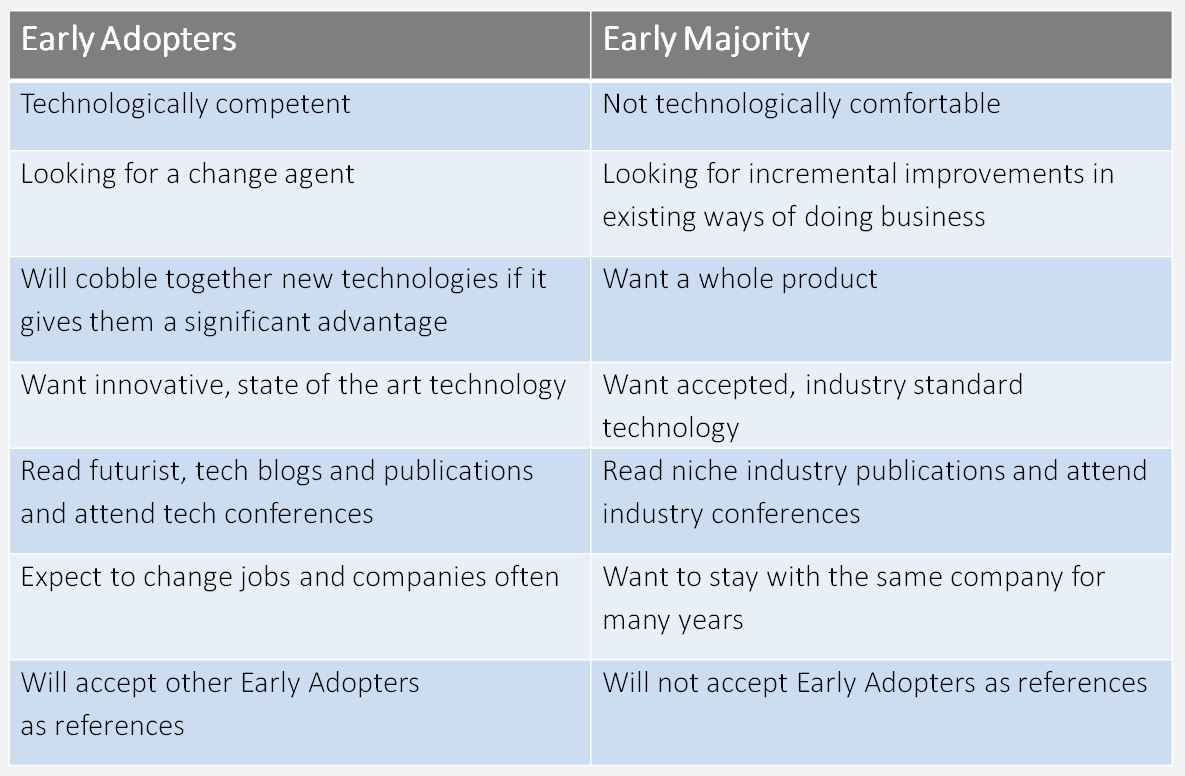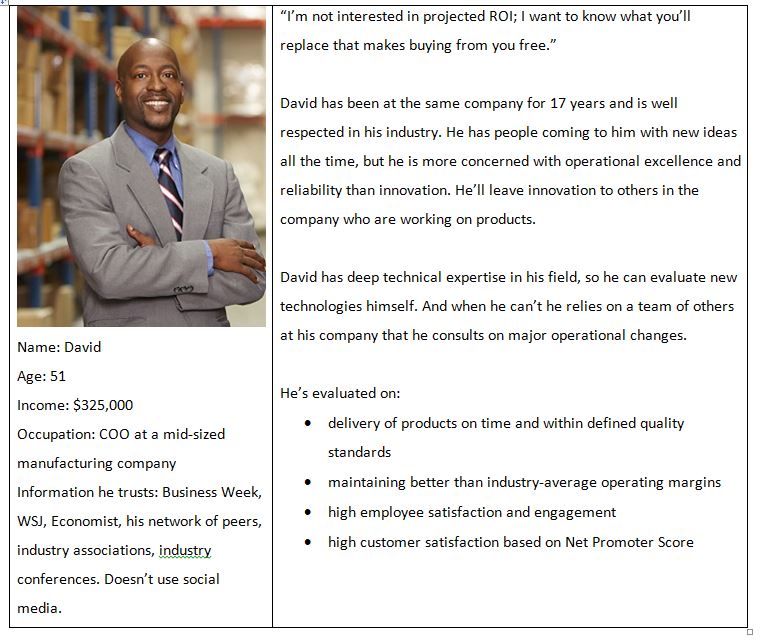This is chapter 3 of Louis Gudema’s Bullseye Marketing book, which is available on Amazon..
This may seem obvious, but it’s not obvious to everyone who starts a business: building your business begins with understanding your customer, and then delivering products and services that they are willing to pay enough for that you can make a profit.
And while many people think of marketing as just being about advertising and promotion, the central role of marketing is actually understanding the customer – the market – and working with the rest of the company to create those products and services that will have a chance for success. And then promoting them and generating demand. This is the most strategic role of marketing. Bullseye marketers can start contributing to this in weeks, and it should be a constant activity going forward.
It’s not enough to build a better mousetrap if the world is happy with the mousetraps that it already has. Companies introduce tens of thousands of new food products annually and most sink without a trace — and that’s just food products. Millions of apps have been developed for Apple, Android, and other platforms, but most get very little usage and even fewer make a meaningful amount of money. Overall it’s estimated that less than 10 percent of new products are still being sold two years later.[i] Many great products have failed because the company was too early to market, too late, or it was delivering something that — good as it was from a technical or aesthetic point of view – simply wasn’t what customers were willing to pay for.
Products and services can have many purposes. Some are necessary for survival, to do things faster and easier, or for knowledge, entertainment, joy, even status. But in business, if the customer isn’t willing to pay for it, it doesn’t have a value.
Ways to do customer research
As a Bullseye marketer, you need to base your product development and promotions on a genuine understanding of your customers. Don’t guess. The first step in gaining customer knowledge is to do research. Here are a few ways to learn about your customers.
Talk to your customers!
The number one way to do customer research is to talk to them! Again, this may seem obvious, but when working with companies, especially startups and small companies, I am amazed at how many executives are resistant to simply sitting down and talking with even a few dozen of their potential customers. But these conversations are by far the fastest, most inexpensive and valuable input they could get when launching a new company or product.
Don’t just think about who you want to serve, what you think they would find valuable, and whether you can reach them with your offering: talk to them! You’ll find people can be remarkably helpful if you say (1) you don’t want to sell them anything, and (2) you do want to know what they think and feel.
These are an example of questions that I use when interviewing the customers of a services company:
- What services are you using them for?
- Do you remember how you first heard of them?
- What other companies were you considering?
- Why did you decide to use them?
- How do you feel about the service that they provided? (“feel” rather than “think” to try to elicit emotional responses)
- How could they make your business more successful over the next 1-2 years?
- When choosing a company for this, which are the three most important considerations? Please rank 1, 2 and 3
- Industry reputation
- Quality of work
- Timeliness of work
- Responsiveness
- Price
- Expertise
- Other? (What?)
- If their prices had been 10% higher, would you have chosen them anyway? 25%?
- What are your major sources of industry information?
- What else would you like to tell me that I haven’t asked?
Depending on the company and the service, the questions can be much more detailed.
And those are just a few initial questions. Key to successful interviews is making them a conversation. Listen to how the person responds and ask follow-up questions.
Ideally, you want to talk in person or via a web conference so you can see their expressions when you ask them how they use a product or service, and what they would like and not like.
If you’re talking about a new, physical product, you should show them an inexpensive prototype or let them try a sample. But keep the costs down in your first round of research. You could initially use artist renderings or sketches and save on developing production samples until you get favorable feedback. Or print an inexpensive 3D prototype. For a new app or software program, your sample could be as simple as a set of screen – perhaps just “wireframes” that show functionality but have no real colors or design, and have no (expensive) programming behind them.
It’s important that the people that you’re talking with feel comfortable to share with you their true feelings. You don’t want them to be “nice” and just tell you that they think that your service, or your idea for a new product, is great when in fact they don’t. You can straight out tell them that you want their honest reactions and feedback, and that they should not be nice, and maybe that will work. Or maybe you will need to have people in your company that they don’t know talk to them, or even hire an outside researcher to do the interviews.
And here’s a little secret: often this is not just great research. If you have a good idea for a new product probably 20 percent or more of the people you talk with will say, “If you really go ahead with this let me know; I would love to buy it.” (If they don’t say this, that could be a red light.) But don’t try to sell it to them; let them make that kind of remark.
Now, I know, Steve Jobs didn’t do customer research. He would dismiss it with an apocryphal quote from Henry Ford who supposedly said, but never actually did, “If I had asked customers what they wanted they would have told me ‘a faster horse.’” So Steve Jobs was able to develop great products without talking to customers, great: he was a one in a billion genius. He also had many notable failures such as the Apple III and Lisa. For the rest of us, it’s way better if we talk to customers.
Regular, 30-60 minute conversations with customer should be a part of your ongoing marketing and customer retention/growth programs, not just when launching a new company or product. They can be invaluable. I was doing interviews for one client who swore that his customers only cared about price. The very first customer of his that I asked to rank the top three most important buying considerations immediately said, “Well, price isn’t in the top three.”
And be ready for some of your customers to be unhappy. I was doing interviews for one company and the CEO said, “I don’t know why we’re talking with our unhappy customers. We know they’re unhappy. It just reminds them of that.”
Wrong attitude! Heed the words of Bill Gates, “Your most unhappy customers are your greatest source of learning.”
Online forums, social media and review site
As a Bullseye marketer, in Phase 1 we’re especially interested in that which is fast, inexpensive and effective. You don’t necessarily need to hire a market research firm to understand what’s important to prospective customers. You can often gather free customer insights from masses of people through public sites and industry forums on which people review products and services. Go online and read what your customers are saying about the good, bad and ugly of your existing products, and those of your competitors.
Look at sites such as Facebook, LinkedIn, Twitter, Amazon and Yelp. And technology review sites like Capterra and G2Crowd. What’s going on in the conversation about the industry, and the conversation around particular companies and products? What do the customers like? What are their gripes? Are there patterns that can help you identify an unfilled need?
You can use special software tools to help you monitor the social media universe to see what people are saying about you, your industry and competitors outside of your usual social media channels. These range from very deep, expensive programs to free ones with more limited capabilities
Internet research
The Internet is a great market research tool. Online you can, for example, find out:
- the demographic breakdown of the United States, or of a particular city or state[iii]
- the number of people serving in the military, and the states with the highest numbers
- the wealthiest towns
- trends for commercial bakeries[iv]
- the size of the market for learning management system software
- size and growth of cloud hosting[v]
- how many Mexican restaurants there are in San Antonio
Or this nugget from the St. Louis Federal Reserve on the decline in greeting cards sales over the past 15 years.






